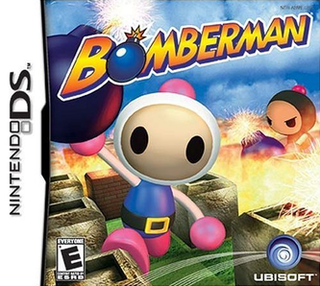
Bomberman is a 2005 video game developed by Racjin for the Nintendo DS. It was released by Hudson Soft in Japan on May 26, 2005, and published worldwide by Ubisoft. The game is notable for its chibi art style, previously seen in the Bomberman Land series.

Bomberman Generation is a 2002 video game released for the GameCube. It was followed up by Bomberman Jetters.

Bomberman Jetters is an action game for the Game Boy Advance, GameCube and PlayStation 2, and part of Hudson Soft's Bomberman series. The game builds on the gameplay style established in the previous Bomberman series entry, 2002's Bomberman Generation, and features characters and settings from the 2002 anime series Bomberman Jetters. The GameCube version utilizes cel-shaded graphics similar to those of Bomberman Generation, while the PlayStation 2 version does not.

Online Bomberman was a 2003 online game of the Bomberman franchise developed by MGAME Corporation and Hudson Soft, and was released for Microsoft Windows in Japan, South Korea, Taiwan, Hong Kong and Macau. All servers have been permanently shut down. However, there is a fan-based version.

Super Bomberman 5 is a video game released by Hudson Soft in early 1997. It is the fifth installment of the Super Bomberman series and the final Bomberman game to be released on the Super Famicom. The game was released in two variations: a standard cartridge and a gold cartridge, which was sold through CoroCoro Comic. The gold cartridge included extra maps in battle mode.

Super Bomberman 2 is a video game developed by Produce! and Hudson Soft and released on the Super Nintendo Entertainment System. It was released in Japan on April 28, 1994, in North America later the same year, and in Europe on February 23, 1995.

Bomberman: Panic Bomber is a 1994 puzzle video game developed and published by Hudson Soft for the PC Engine on December 22, 1994. It was later released for the Neo Geo, Super Famicom, Sharp X68000, FM Towns, NEC PC-9821, Virtual Boy, and PlayStation Portable. It saw a re-release for the Wii and Wii U's Virtual Console services. Panic Bomber is a falling block game with the players' goal being to clear matching blocks using bombs, ensuring their screen does not fill and that their opponents' screens do. It received mixed to positive reception, identified as a decent game by multiple critics. It has been compared to the falling block puzzle game Tetris. The Virtual Boy version received a mixed reception for its handling of the platform's visual capabilities.

Bomberman Tournament is a game in the Bomberman series for the GBA. The game contains a multiplayer battle mode between linked Game Boy Advances. The player and up to three others can compete in any of the game's eight multiplayer battle arenas, each of which has its own unique gameplay twist.
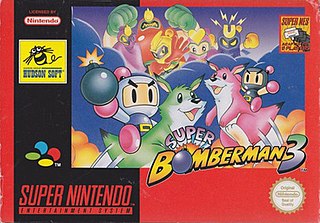
Super Bomberman 3 is a game released for the Super Nintendo Entertainment System in 1995. It is the third installment in the Super Bomberman series, and the third Bomberman game to be released for the system. Up to five players can play at the same time. The game was released in Japan and the PAL region, but not in North America due to the closure of Hudson Soft USA.

Bomberman Land, known in Japan as Bomberman Land Wii, is an action puzzle video game developed by Racjin and published by Hudson Soft. It was released in Japan for Wii on March 8, 2007, January 29, 2008 in North America, and March 14, 2008 in the PAL region. Part of the Bomberman franchise, it is the fifth game in the Bomberman Land series and the console counterpart to the portable version released for the PlayStation Portable later in the same month.

Bomberman Land 2: The Biggest Theme Park in Game History is a 2003 video game developed by Racjin and published by Hudson Soft that was released in July for the PlayStation 2 and GameCube. Part of the Bomberman franchise, it is the sequel and the second game in the Bomberman Land series.
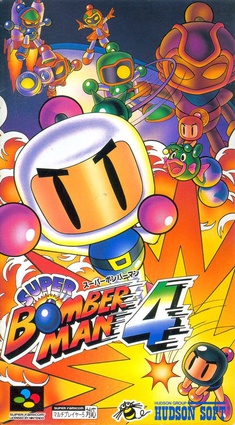
Super Bomberman 4 is an action-party video game developed by Produce and published by Hudson Soft. It was developed for the Super Famicom, released on April 26, 1996, in Japan. Part of the Bomberman franchise, it is the fourth installment of the Super Bomberman series.

Bomberman 64 is a Japanese Nintendo 64 game released in 2001. It was the final Nintendo 64 game to be released in Japan. The game features four distinct gameplay modes, each with unique gameplay, based on different games in the Bomberman franchise.

Bomberman Wars is a 1998 Japanese video game in the Bomberman series released for the Sega Saturn and PlayStation. It is a strategy role playing game, in contrast to previous games.

Bomberman Fantasy Race is a racing video game developed by GraphicResearch Inc., released for PlayStation in Japan by publisher Hudson Soft in 1998, in North America by Atlus USA in 1999, and in Europe by Virgin Interactive in 2000. It is a spin-off of the Bomberman series.

Bomberman Party Edition, known in Japan and Europe as simply Bomberman, is a PlayStation version of the 1983 game Bomberman. In addition to vintage graphics for single player mode, an option for enhanced graphics is added. The game was released to the PlayStation Network as a PSone Classic on May 28, 2008, in Japan and December 10, 2009, in North America.

Bomberman Land Touch! 2 is a puzzle video game for the Nintendo DS released in Japan on July 19, 2007, and in North America, Europe, and Australia in 2008. Part of the Bomberman franchise, it is the sequel to Bomberman Land Touch! and the seventh game in the Bomberman Land series.
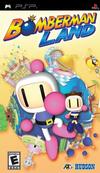
Bomberman Land, known in Japan as Bomberman Land Portable, is a video game released for PlayStation Portable on 21 March 2007 in Japan, and in North America and the PAL region in 2008. Part of the Bomberman franchise, it is the sixth game in the Bomberman Land series and the portable counterpart to the console version released for the Nintendo Wii in the same month.
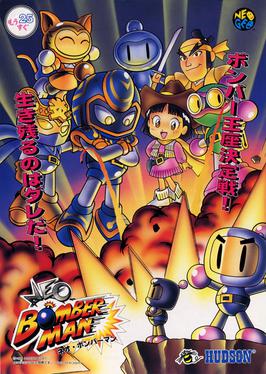
Neo Bomberman is an action-maze arcade video game developed by Produce! and published by Hudson Soft for the Neo Geo MVS on May 1, 1997. It is one of two games in the Bomberman franchise that was released for the Neo Geo platform, the first being Panic Bomber, and the only one to retain its traditional top-down gameplay. It was released for the Neo Geo MVS (arcade) and has not received a home console release to date. It was the last original Bomberman title to be released for arcades until Konami's Bombergirl in 2018.
Bomberman GB is a sub-series of video games in Hudson Soft's Bomberman series released for the Game Boy. The first entry was Bomberman GB, released as Wario Blast: Featuring Bomberman! in North America and Europe, later succeeded by Bomberman GB 2, under the name Bomberman GB internationally, and Bomberman GB 3, which was only released in Japan.


















